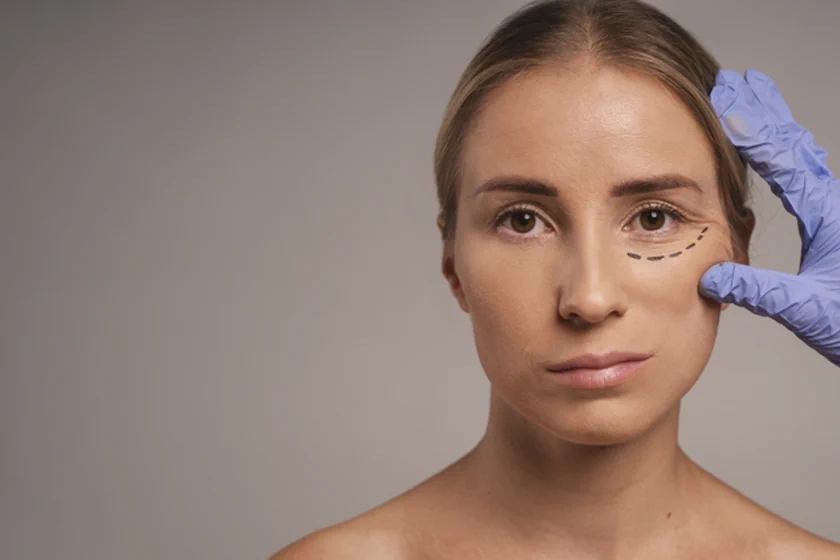|
Getting your Trinity Audio player ready...
|
Ptosis, pronounced “toe-sis,” is a condition characterized by the drooping of the upper eyelid. This condition can affect one or both eyes and can range from barely noticeable to significantly obstructive, impacting vision and quality of life. Ptosis is more than just a cosmetic issue; it can be an indicator of underlying health problems that need attention. Understanding ptosis causes and treatment is essential for proper management and care.
In India, ptosis is not an uncommon condition, affecting a considerable number of individuals. According to recent statistics, approximately 1 in 200 people in India experience some form of ptosis during their lifetime. This prevalence highlights the importance of understanding and effectively managing ptosis to ensure overall eye health.
Types of Ptosis
Ptosis can manifest in various forms, each with its own set of causes and characteristics:
Congenital Ptosis: This type is present at birth and is usually due to improper development of the levator muscle, which is responsible for lifting the eyelid. Children with congenital ptosis might also have other eye problems, such as amblyopia (lazy eye) or strabismus (crossed eyes).
Acquired Ptosis: This type develops later in life and is categorized into several subtypes:
- Aponeurotic Ptosis: The most common form in adults, usually resulting from the stretching or detachment of the levator muscle’s tendon. This can be due to aging, long-term contact lens wear, or repetitive eye movements.
- Neurogenic Ptosis: Caused by nerve issues, such as those seen in conditions like Horner’s syndrome or myasthenia gravis. This type of ptosis occurs due to problems with the nerves controlling the eyelid muscles.
- Myogenic Ptosis: Resulting from muscle diseases like muscular dystrophy. The muscles that lift the eyelid weaken over time, leading to drooping.
- Mechanical Ptosis: Occurs when the eyelid is weighed down by a mass or swelling, such as a tumor or significant eyelid swelling from infection or inflammation.
- Traumatic Ptosis: This type follows an injury or surgery around the eye, which can damage the muscles or nerves that lift the eyelid.
Causes of Ptosis
Understanding the underlying causes of ptosis is crucial for effective treatment. Some common causes include:
- Aging: As we age, the muscles around our eyes can weaken or stretch, leading to aponeurotic ptosis.
- Genetics: Congenital ptosis can run in families, indicating a genetic component.
- Nerve Damage: Conditions that affect nerve function, such as diabetes, can lead to neurogenic ptosis.
- Injury or Trauma: Accidents or surgeries involving the eye or surrounding areas can cause traumatic ptosis.
- Diseases: Neuromuscular diseases like myasthenia gravis or muscular dystrophy can result in myogenic ptosis.
- Tumors or Growths: Masses in or around the eye can weigh down the eyelid, causing mechanical ptosis.
Symptoms of Ptosis
The symptoms of ptosis can vary depending on the severity and type of the condition. Common symptoms include:
- Drooping Eyelid: The most obvious symptom, which can affect one or both eyes.
- Eye Strain: Effort to lift the drooping eyelid can lead to fatigue, especially during activities requiring prolonged focus.
- Double Vision: Severe ptosis can cause the eyelid to cover part of the pupil, leading to vision issues like double vision.
- Headaches: Constant straining to lift the eyelid and see properly can result in headaches.
- Aching: Around the eyes or forehead due to muscle fatigue from trying to compensate for the drooping eyelid.
Diagnosis and Evaluation
Diagnosing ptosis involves a comprehensive evaluation by an eye specialist. The diagnostic process typically includes:
- Medical History: The doctor will ask about your symptoms, their onset, and any related health issues to understand the context of your condition.
- Physical Examination: This involves checking the strength and function of the eyelid muscles, as well as assessing the overall health of your eyes.
- Visual Field Test: This test assesses if ptosis is affecting your vision and to what extent.
- Eyelid Measurements: Precise measurements of the eyelid’s position and movement help determine the extent of drooping and guide treatment decisions.
- Additional Tests: In some cases, blood tests or imaging studies like MRI or CT scans may be necessary to rule out underlying conditions such as tumors or neuromuscular diseases.
Treatment Options for Ptosis
The treatment for ptosis depends on its cause and severity. Here are the primary options:
Non-Surgical Treatments:
- Ptosis Crutches: These are special glasses with an attachment that holds up the eyelid. They are particularly useful for temporary or mild ptosis.
- Medications: For ptosis caused by neuromuscular conditions, medications that improve muscle strength can be beneficial.
Surgical Treatments:
- Levator Resection: This procedure involves tightening the levator muscle to lift the eyelid. It is commonly used for both congenital and acquired ptosis.
- Frontalis Sling Operation: In cases where the levator muscle is very weak or non-functional, a sling made of either synthetic material or tissue from the patient is used to connect the eyelid to the forehead muscles, allowing the forehead muscles to lift the eyelid.
- Müller’s Muscle Conjunctival Resection: This involves removing a portion of the Müller’s muscle to elevate the eyelid. It is typically used for mild to moderate ptosis.
Dr. Surbhi's Approach to Ptosis Treatment
At Aadicura, Dr. Surbhi Kapadia, recognized as the best eye specialist in Vadodara, offers a personalized and comprehensive approach to ptosis treatment. Her method includes:
- Comprehensive Evaluation: Thorough assessments to pinpoint the exact cause and severity of ptosis, ensuring accurate diagnosis.
- Tailored Treatment Plans: Customized surgical and non-surgical options based on individual needs, considering the patient’s age, overall health, and specific ptosis characteristics.
- Advanced Techniques: Utilizing the latest advancements in oculoplastic surgery to ensure optimal outcomes with minimal risk.
- Post-Treatment Care: Detailed follow-up and recovery plans to ensure a smooth healing process and promptly address complications are crucial for ptosis surgery recovery.
Conclusion
Ptosis may seem like a minor inconvenience, but it’s essential to address it, especially when it starts to interfere with vision or daily activities. Understanding the causes, symptoms, and treatment options is the first step toward effective management.
For those in Vadodara, Dr. Surbhi Kapadia and the team at Aadicura, the best eye hospital in Vadodara, are here to provide top-notch care. We ensure that every patient receives the best possible treatment for their condition. Whether you’re dealing with congenital ptosis or an acquired form, expert help is just a consultation away.
Remember, your eyes are not just the windows to your soul—they’re vital for everything you do. Don’t let ptosis cloud your vision. Seek professional help, and let the experts guide you to clearer, brighter days.
FAQs
Can ptosis be corrected without surgery?
Yes, in mild cases or specific conditions, non-surgical options like ptosis crutches or medications may be effective. These methods are particularly useful when surgery is not immediately feasible or if the ptosis is temporary.
How long does ptosis surgery recovery take?
Recovery can vary, but typically it takes a few weeks. Most patients can return to normal activities within 1-2 weeks, with full recovery in about 6 weeks. The exact recovery time depends on the type of surgery and the patient's overall health.
Is ptosis surgery painful?
The surgery is performed under anesthesia, so you won't feel pain during the procedure. Post-surgery discomfort is usually minimal and manageable with prescribed medications. Patients may experience some swelling and bruising, which subsides within a few days.
Will I need multiple surgeries for ptosis?
In some cases, especially with congenital ptosis or other underlying conditions, additional surgeries might be required to achieve the best results. The need for further surgery can depend on the initial outcome and the progression of any underlying conditions.
Can ptosis recur after treatment?
While recurrence is rare, it can happen, especially if the underlying cause persists or is related to progressive conditions. Regular follow-ups with your eye specialist can help monitor and manage any potential recurrence.
![]()






